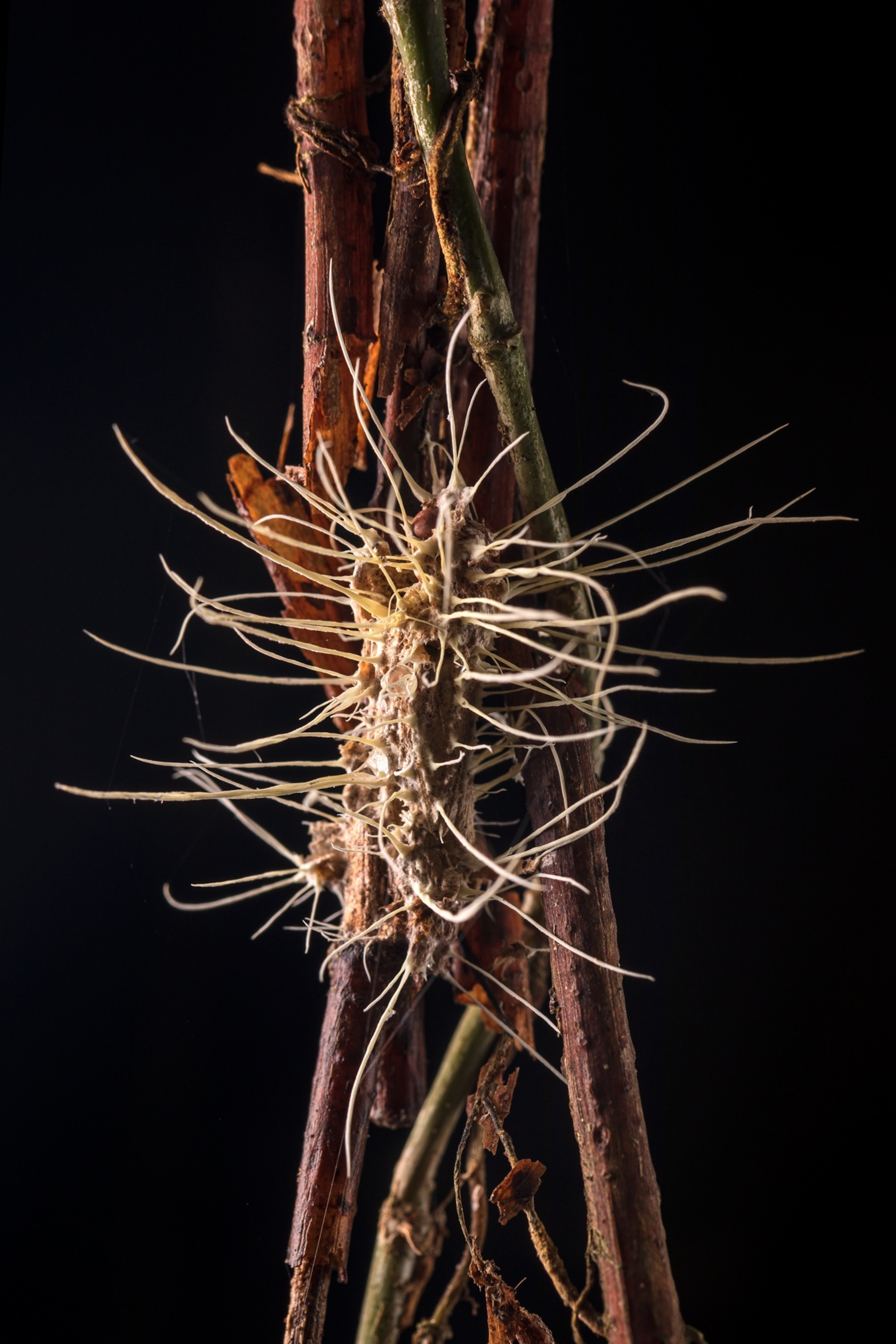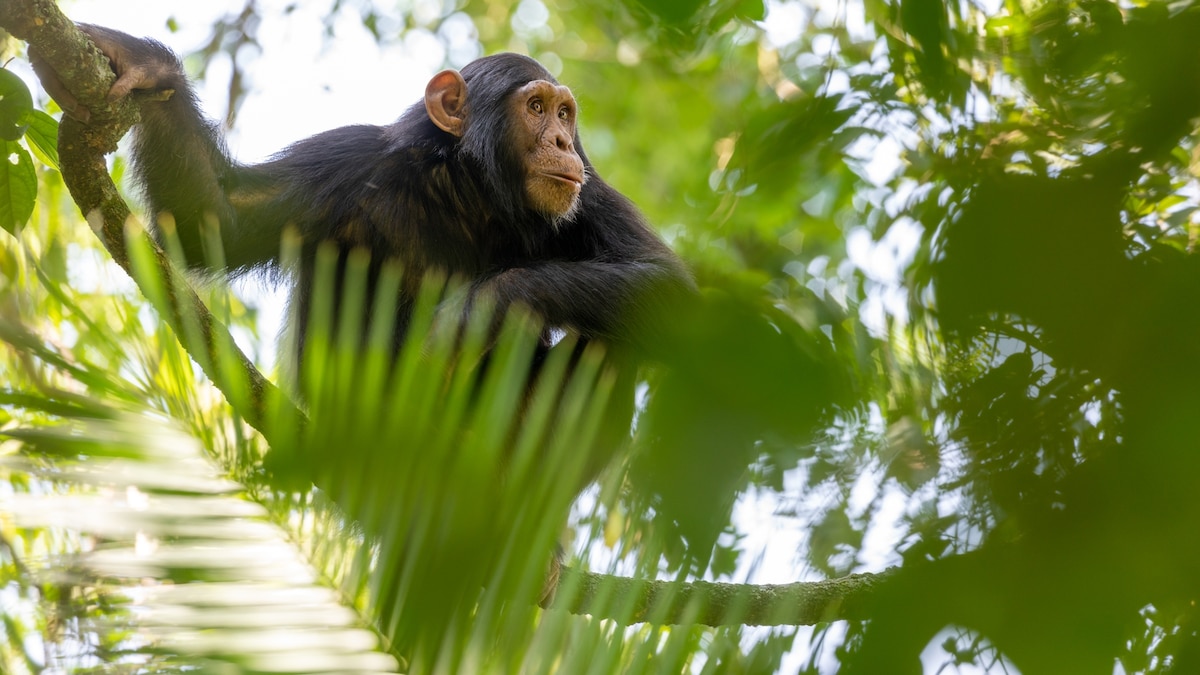Now Reading: The surprising real world uses of zombie fungi
-
01
The surprising real world uses of zombie fungi
The surprising real world uses of zombie fungi

ByRebecca Dzombak
Photographs byRoberto García-Roa
Zombie fungi have become notorious in pop culture and from videos of them bursting through ants, but it’s time for their redemption arc.
Scientists know very little about how zombie fungi work, but they and closely related fungi could help farmers kill costly pests like mealybugs and aphids. These pests are wreaking increasing havoc on the world’s crops as climate change helps them spread.
João Araújo, a mycologist at the University of Copenhagen, wants to learn more about these mysterious, parasitic fungi in the hopes of one day using them as a precision weapon against some of the world’s most nefarious farm pests.
Armed with a new 1.2 million-euro grant from Villum Fonden, a Danish foundation that funds scientific research, and a team of collaborators located around the world in fungi hotspots from Brazil to Borneo, Araújo is ready to plumb the depths of tropical forests to collect as many infected insects as he can. He’ll document and sequence their genomes to search for signs of fungal invaders, research that could pioneer a new way of killing dangerous pests from the inside out.

Clinging to a leaf in the Peruvian Amazon, a moth becomes host to a fungal takeover. Ophiocordyceps humberti, an entomopathogenic fungus, erupts from the insect’s lifeless form in slender filaments known as stromata. Lepidopterans—moths and butterflies—are among the most frequent victims of these silent forest parasites.
A breakthrough discovery
Zombie fungi (a kind of Ophiocordyceps) have a morbid reputation for a reason. The fungus infects an ant and lies in wait, silently unleashing biochemical warfare. When environmental conditions are right, the fungus compels the infected insect to climb high, to where the light is just right (often at noon), latch onto a leaf, and wait for the fungi to shoot a fruiting body out of the ant’s head, releasing spores that find new hosts and continue the cycle. Many ants can be infected at the same time.
“The creepy thing is, they congregate together, so we get these graveyards,” said Charissa de Bekker, a mycologist at Utrecht University in the Netherlands not working with Araujo. “We don’t really know why.”
Evolution has uniquely paired each species of zombie fungus with a single species of insect. This relationship is mostly seen in ants, but a group of scientists, including Araújo, recently learned that fungi can create zombie spiders and wasps.
“Zombification of arthropods by fungi might be more common and diverse than we think,” Araújo said.
But in 2018, scientists uncovered a secret: sometime in the past, some Ophiocordyceps made an evolutionary one-eighty and became an asset for their host, supplying them with amino acids instead of filling their heads with fungus. It’s this surprising ability to switch from parasite to symbiont that’s at the heart of Araújo’s research. If the host insect is a pest, like an aphid, killing the fungi would kill the insect. Farm managers could apply a fungicide that would only target the fungus, leaving other organisms untouched.

Preserved within the Natural History Museum of Denmark, this ant carries the legacy of one of the most iconic fungi ever documented: the Ophiocordyceps “zombie-ant fungus”. First noted by Alfred Russel Wallace in 1859, the fungus infiltrates the nervous system of ants, compelling them to climb to elevated perches—ideal launch points for its infectious spores.
“The same fungal linage can be a host-killing parasite and a nutritional symbiont,” Araújo said. “This is really mind-blowing.”
But this tool will require years of research to develop. There are at least 320 species of Ophiocordyceps; not even two dozen of those have been studied in detail, and scientists are still learning how those work.
How would it work?
Aphids, so-called sap-sucking insects, began relying on symbiotic bacteria to get essential nutrients and proteins from plants at least 300 million years ago. At some point after that, their bacterial partners were replaced with Ophiocordyceps. But the fungi didn’t kill them. Instead, they were helpful symbionts.
“Without these symbionts, the insects die,” Araújo said. His idea is simple: kill the fungus, kill the pest. The perfect weapon, designed by nature and time.
Because Ophiocordyceps aren’t immune to being invaded by other parasitic fungi, researchers could theoretically use parasitic fungi to kill the beneficial fungi, which were once parasitic themselves.
“It’s parasites all the way down,” de Bekker said. Doing so would skip the use of chemical fungicides and insecticides, which can degrade soil health and pollute nearby bodies of water.
You May Also Like
Another option could be siccing zombie fungi on problematic insects. This is appealing in part because each fungus can only attack one species, reducing the likelihood of unintended ecological effects.

True bugs (Hemiptera) benefit from fungi. They survive on sap, a nutrient source rich in sugar and water but critically deficient in amino acids. To compensate, Hemiptera rely on symbiotic relationships—typically with bacteria—that synthesize the essential amino acids they need to survive. In some cases, Ophiocordyceps fungi have replaced these bacterial symbionts.

The texture of a leaf blends seamlessly with the protrusions formed by a fungus from the Akanthomyces group along the dorsal section of a moth. Frozen in time after its final flight, the moth remains completely adhered to the last leaf that witnessed it alive.
Early results for fungi attacking pests are promising.
Spores from Cordyceps, closely related to Ophiocordyceps, reduced the lifespans and reproduction in mealybugs, which invade cotton fields. They inhibited larval development of diamondback moths, which cause billions of dollars of damages to cruciferous crops such as broccoli. Cordyceps has also shown potential in fighting whiteflies, aphids, caterpillars, spider mites, and other insects.
But these findings were in laboratories. To use zombie fungi and their relatives to our advantage in the real world, scientists have to understand how they work, and there’s a long way to go. We know what fungi do, but very little about how they do it.
“Everything we have currently is just hypotheses,” de Bekker said.

Caught between life and decay, this grasshopper, discovered in Peru’s Tambopata rainforest, was overtaken by a fungus. A long exposure photography emulates the invisible effect of the wind that helps spread the fungal life cycle from one host to the next.
Combing the jungles
Araújo’s new grant will explore the diverse world of both parasitic and beneficial Ophiocordyceps fungi in sap-sucking insects found near agricultural sites like coffee, maize, and beans.
“We need more studies on biodiversity … of these fungi to develop smarter ways to fight climate change impacts,” he said. “We just have the tip of the iceberg.”
He and his team will spend at least 10 months scouring tropical forests for insects, starting with Brazil, Kenya, Borneo, and Japan, collecting as many specimens as they can. Once back in the lab in the Netherlands, they’ll sequence the DNA of all the fungi found in each insect, checking for the presence of the beneficial fungi. They will then sequence each fungus’ genome, searching for clues into when and why these fungi evolved a beneficial relationship with the insect, and how it works.

From the dense undergrowth of Peru’s Tambopata rainforest, a fly becomes the launchpad for one of nature’s most specialized entomopathogenic fungi: Ophiocordyceps dipterigena. This fungus hijacks the fly’s behavior, guiding it to a spot ideal for fungal development. After the insect’s death, its body gives rise to spore-bearing structures that rupture into the air—releasing microscopic agents of infection in search of the next host.
“I think this project will very substantially advance our knowledge on how these symbiotic systems evolve,” said Piotr Łukasik, an evolutionary ecologist at the Jagiellonian University in Krakow who is collaborating with Araújo on the new grant. “It’s a massive field for discovery.”
The project could also help pest managers respond more quickly to new insect invasions. Scientists could look at where the insect originally came from and check for symbiotic fungi, which they could then target in the insect’s invasive range.
Araújo expects his project to lay the foundations for entirely new forms of pest control. “We could have much more efficient strategies to control only the pests we want to,” he said. “To do that, we need this exploratory work.”
























